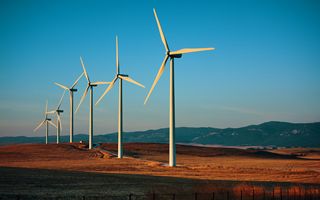(Finance) – Future Electricity And ANIE Federationthe two Associations belonging to Confindustria which together represent theentire national industrial electricity supply chainmake an urgent appeal to the Government to issue a law that avoids blocking the national supply chain of renewable electricity technologies in Italy.
“The new regulatory framework – the associations hope – DM Areas Idonee, DL Agriculture and the soon-to-be issued “Consolidated Law for renewables” risks translating into a real stop to projects already in the process of authorisation – in stark contrast to the principle of legitimate expectations – and to make 96% of the Italian territory unsuitable for renewables”.
“Italy cannot afford to run this risk, given the total discretion left to the Regions by the Eligible Areas Ministerial Decree, as demonstrated by the case of Sardinia whose bill on eligible areas has retroactive effects and defines criteria that they will make 99% of the Sardinian territory unsuitable“, write Elettricità Futura and the Anie Federation.
“Therefore, – continue the associations – we ask the Government to issue a rule according to which the Regionsin exercising their power to regulate suitable areas, comply with the following criteria: the suitable areas identified in implementation of the EU Red II Directive must continue to be considered as such; the new regional provisions must not apply to projects for which at least one of the administrative procedures necessary to obtain authorization has been initiated”.
“In the absence of such regulatory intervention – conclude Elettricità Futura and Anie Federation -, it would be de facto impossible to achieve the objectives of the Pniec, the Pnrr and the DM Suitable Areasand a supply chain made up of national industrial excellences competitive on a global level will stop, which unfortunately is increasingly suffering, due to the drastic drop in the installations of residential and industrial systems”.
According to the Polytechnic of Milanin 2023, the photovoltaic and wind industrial supply chains have generated a turnover of around 10 billion euros, and more than 60% of this value remained on Italian territory, a further 20-25% in other European countriesand only about 10% went outside European borders.
The socio-economic benefits for Italy deriving from the development of the renewable technologies supply chain are considerable and could amount to up to 2% of the annual GDP between now and 2030. The development and consolidation of the industrial supply chain and national production of technologies for transition pass through the growth of internal demand for technologies and the possibility of carrying out projects.
“The renewable energy sources sector it needs a stable regulatory framework – he declared Filippo Girardi, President of ANIE. – It is a strategic sector that occupies today approximately 80,000 employeesa figure that could double by 2030 also in view of a strengthening of the national technological industry. ANIE reiterates the need for one greater collaboration between public and private stakeholders because the achievement of energy security is a shared priority at a European level which in our country takes on a particularly relevant and urgent nature”.
Hinder the development of renewable energy is in antithesis to the need to reduce energy costs in Italy. As he recently explained Stefano Besseghini, President of the Regulatory Authority for Energy, Networks and the Environment (ARERA)renewables are already helping to reduce costs, and to reduce the price of energy in our country we need to bet more courageously on renewable energy sources and storage systems.
“Renewables are the technologies that they produce electricity at the lowest cost and which guarantee the country energy security and independence. Their development should therefore be the priority, even more so when considering the objectives of reducing CO2 emissions”, he says Agostino Re Rebaudengo, President of Elettricità Futura.
(Photo: Vidar Nordli on Unsplash)
